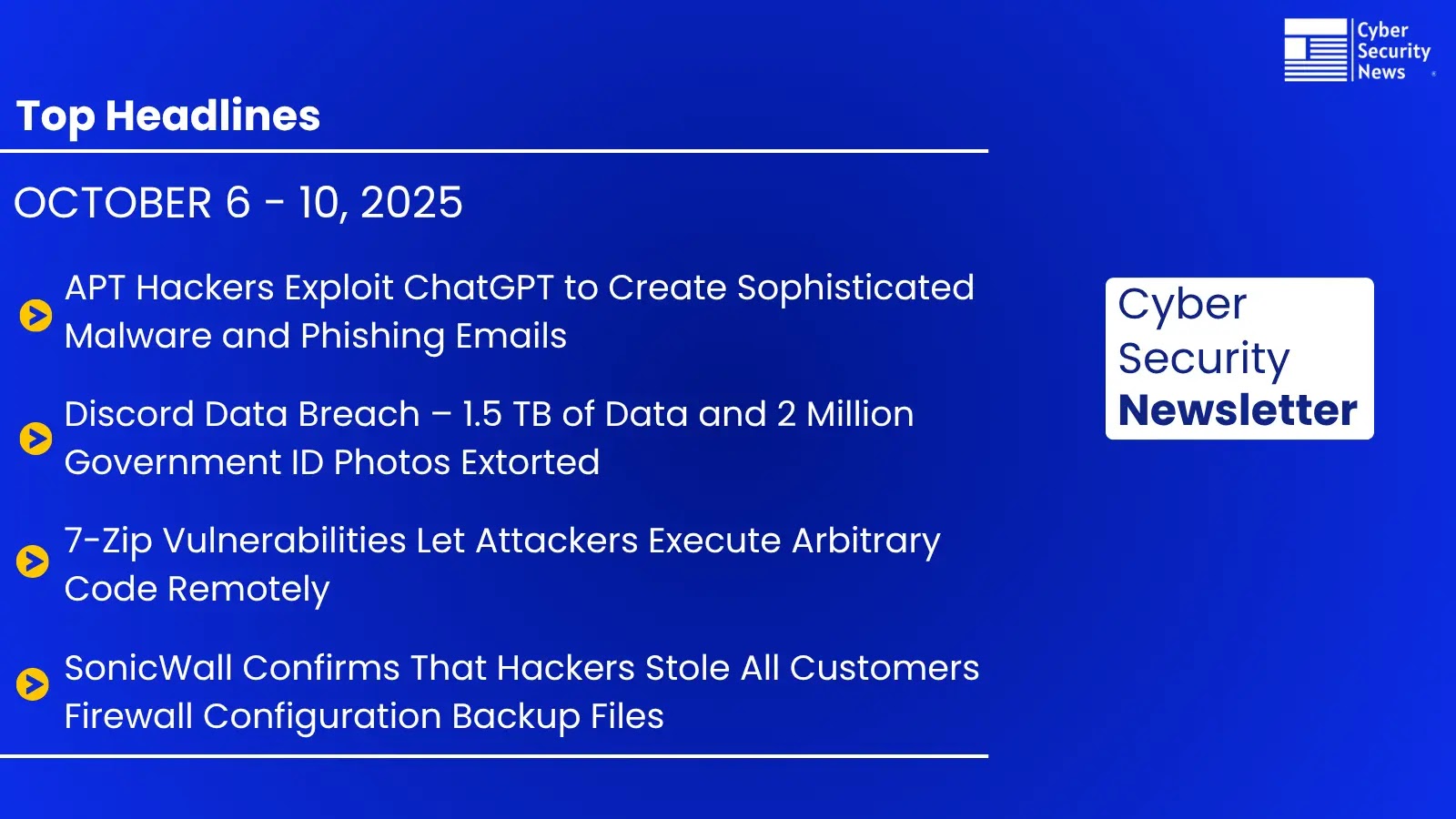
Cybersecurity Newsletter Weekly – Discord, Red Hat Data Breach, 7-Zip Vulnerabilities and Sonicwall Firewall Hack
The digital landscape is a relentless battleground, with new threats emerging constantly. Staying informed isn’t just best practice; it’s a fundamental requirement for maintaining robust security postures. This week’s cybersecurity roundup zeroes in on critical incidents that demand immediate attention, ranging from significant data exposures to widespread software vulnerabilities and sophisticated attacks on high-value targets.
Discord Platform Breach: User Data at Risk
Discord, a widely used communication platform, recently faced a security incident that exposed user data. While the full extent of the breach is still under investigation, the potential for exploitation of this leaked information is a serious concern. Such breaches often lead to credential stuffing, phishing campaigns, and other forms of social engineering attacks, leveraging the exposed data to compromise further accounts or systems.
Remediation Actions:
- Password Rotation: All Discord users should immediately change their passwords, opting for strong, unique combinations.
- Multi-Factor Authentication (MFA): Enable MFA on your Discord account and any other online services that support it. This adds a critical layer of security, making it significantly harder for unauthorized individuals to access your accounts even if they have your password.
- Phishing Awareness: Be extra vigilant against suspicious emails, messages, or links that claim to be from Discord or other services. Verify the authenticity of communications before clicking on links or providing credentials.
- Data Monitoring: Consider using services that monitor for your personal information appearing in data breaches.
Red Hat Data Breach: Supply Chain Implications
A significant data leak impacting Red Hat, a prominent open-source software provider, has sent ripples across the cybersecurity community. Breaches at companies like Red Hat are particularly concerning due to their central role in the software supply chain. A compromise here could potentially affect countless organizations and individuals relying on Red Hat’s products and services. The specifics of the data exposed are crucial in understanding the downstream impact, but such incidents often involve sensitive intellectual property, customer data, or internal operational details.
Remediation Actions:
- Supply Chain Audit: Organizations utilizing Red Hat products should conduct an immediate audit of their systems for any unusual activity.
- Patch Management: Ensure all Red Hat products and related dependencies are updated to the latest security patches.
- Network Segmentation: Implement strict network segmentation to limit the lateral movement of potential attackers should a compromise occur through a supply chain vector.
- Threat Intel Integration: Integrate threat intelligence feeds related to the Red Hat breach to enhance your detection capabilities.
7-Zip Vulnerabilities: Archiver Risks
The popular open-source archiving utility, 7-Zip, has been found to contain critical vulnerabilities that could allow for arbitrary code execution. These flaws present a significant risk because 7-Zip is widely used across various operating systems and by both individuals and enterprises for compressing and decompressing files. An attacker could craft a malicious archive file that, when opened by a vulnerable version of 7-Zip, could compromise the user’s system.
Specific vulnerabilities include CVE-2022-29072, which details a heap-buffer-overflow, and other parsing errors that could lead to remote code execution (RCE).
Remediation Actions:
- Update Immediately: Update all installations of 7-Zip to the latest available version. This is the most crucial step to mitigate these vulnerabilities.
- Caution with Archives: Exercise extreme caution when opening archive files from untrusted sources.
- Endpoint Protection: Ensure robust endpoint detection and response (EDR) solutions are in place to detect and prevent exploitation attempts.
| Tool Name | Purpose | Link |
|---|---|---|
| 7-Zip Official Website | Download the latest secure version of 7-Zip. | https://www.7-zip.org/ |
| VirusTotal | Analyze suspicious archive files for malware. | https://www.virustotal.com/ |
| OWASP ZAP | Web application security scanner, useful for developers integrating 7-Zip in web apps. | https://www.zaproxy.org/ |
SonicWall Firewall Hack: Perimeter Defense Breached
SonicWall, a leading provider of network security solutions, has faced a breach targeting its firewall products. This type of incident is particularly alarming as firewalls are designed to be the primary line of defense protecting networks from external threats. A compromise of firewall devices can provide attackers with deep access into an organization’s internal network, allowing for data exfiltration, system disruption, and the deployment of ransomware or other malicious payloads.
The attack likely exploited specific vulnerabilities within the SonicWall firmware or management interfaces, potentially including flaws like those identified in previous advisories (e.g., CVE-2021-20023 affecting SSL VPNs, though the current incident may involve different vectors).
Remediation Actions:
- Firmware Updates: Immediately apply all available firmware updates and security patches released by SonicWall.
- Configuration Review: Conduct a comprehensive review of your SonicWall firewall configurations, ensuring all best practices are followed and unnecessary services are disabled.
- Log Monitoring: Enhance monitoring of SonicWall firewall logs for any unusual activity or indicators of compromise.
- Network Segregation: Review and strengthen network segmentation to minimize the impact if a firewall is compromised.
- External Vulnerability Scans: Perform regular external vulnerability scans against your perimeter defenses to identify potential weaknesses.
The incidents highlighted this week serve as a stark reminder: proactive security measures and a vigilant approach are non-negotiable. From Discord user data to critical infrastructure elements like Red Hat and SonicWall, the attack surface is vast and constantly under assault. Regular patching, strong authentication, and continuous monitoring remain the bedrock of an effective cybersecurity strategy.





